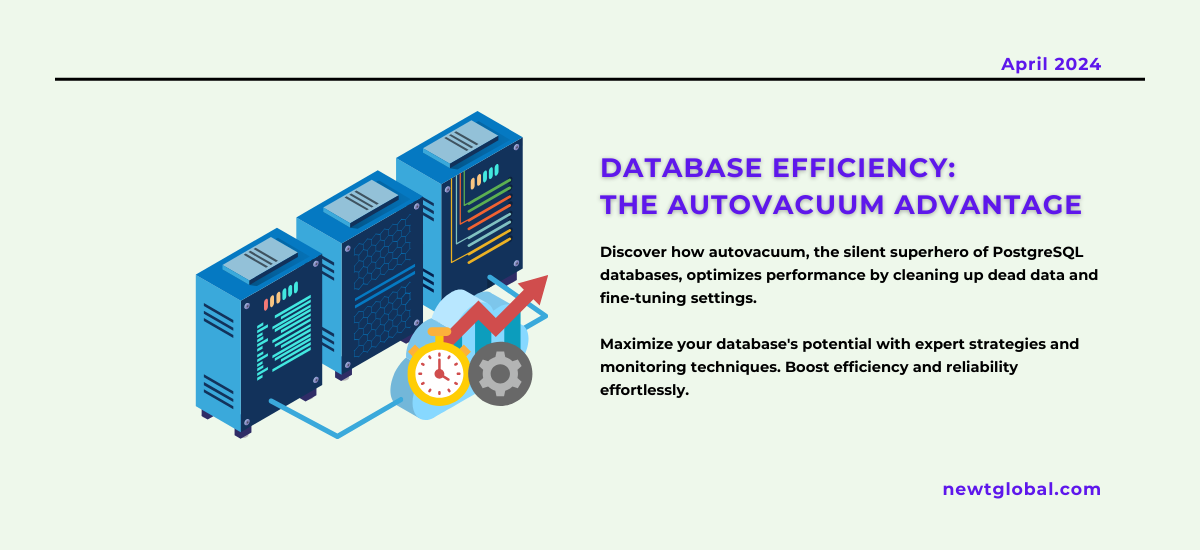
Let’s talk about a great tool for your database called autovacuum. This tool is like a silent superhero for your PostgreSQL database. It helps keep your database running smoothly and quickly and plays a big part in making sure your database performs well and stays reliable. We’re going to explore how autovacuum can make your database better and more efficient.
The Essence of Autovacuum
Think of your database like a busy city. Autovacuum is like the cleanup crew that comes out at night. It works hard to keep the streets (or in this case, your database) clean and easy to move around in. It does this by getting rid of old, unnecessary data that’s just taking up space, which we call “dead tuples.” This helps prevent your database from getting too crowded. Autovacuum also makes sure that the map of your database (the way data is organized) is always up-to-date. This helps your database run as fast and smoothly as a gazelle.
Crafting the Perfect Autovacuum Spell for Peak Performance
To make autovacuum work best for you, you need to adjust some settings in a file named postgresql.conf. This involves changing things like how often autovacuum takes a break (autovacuum_naptime), and how much data needs to be there before autovacuum decides to clean up (autovacuum_vacuum_threshold). By fine-tuning these settings, you make sure autovacuum works in harmony with your database’s needs without getting in the way of its operations.
Strategies to Keep Your Database in the Fast Lane
While autovacuum is great, there are a few things you can do to help it along:
-
- Consider doing some manual cleanup during off-peak hours. This gives your database some breathing room during busy times.
-
- Use settings like vacuum_cost_delay and vacuum_cost_page_hit to control how much resources the cleanup uses. This way, your system isn’t overwhelmed.
-
- Keep an eye out for any transactions that might block autovacuum’s work, and deal with them promptly. This helps ensure autovacuum can do its job effectively.
Monitoring Autovacuum’s Work
Watching how autovacuum is doing is important. By using tools like pg_stat_user_tables and pg_stat_progress_vacuum, and by looking at the database logs, you can see how often autovacuum is running, how much space it’s freeing up, and whether it’s preventing potential problems. If autovacuum isn’t doing its job as well as you’d like, you might need to adjust its settings.
The Magic of Autovacuum
Autovacuum is more than just a feature. It’s a crucial part of keeping your database organized, fast, and reliable. By understanding and configuring autovacuum, you turn your database into a well-oiled machine. Embrace autovacuum, and you’ll see your database perform better than ever, ensuring it remains strong and efficient for years to come.
In conclusion, autovacuum is your key to unlocking a smooth, efficient, and reliable database. But what if you could take your database performance and migration efforts to an even higher level? Newt Global DMAP is a world-class product that enables the mass migration of Oracle Database to cloud-native PostgreSQL faster, better, and cheaper. With this powerful tool, transitioning to a more efficient and cost-effective database environment has never been easier.
Interested in elevating your database solutions and ensuring a seamless migration process? Visit newtglobal.com to learn more about how Newt Global DMAP can transform your database management and migration strategy. For more information and to get started on your migration journey, don’t hesitate to reach out to us at marketing@newtglobalcorp.com.
